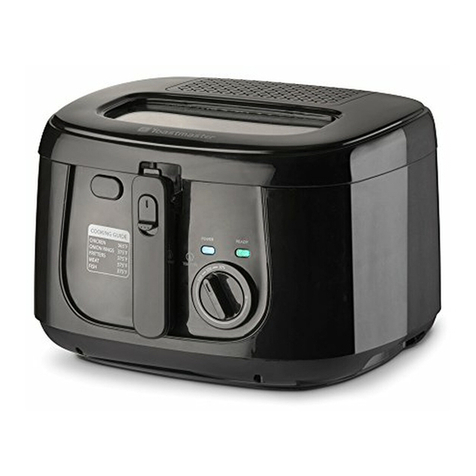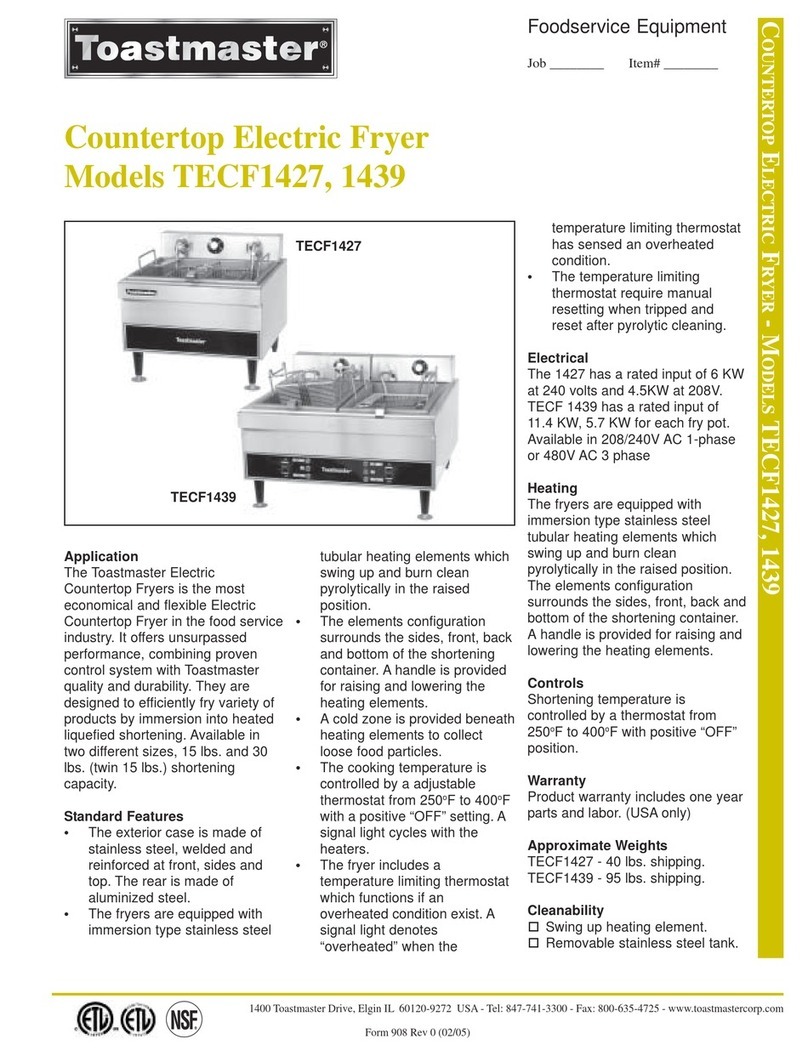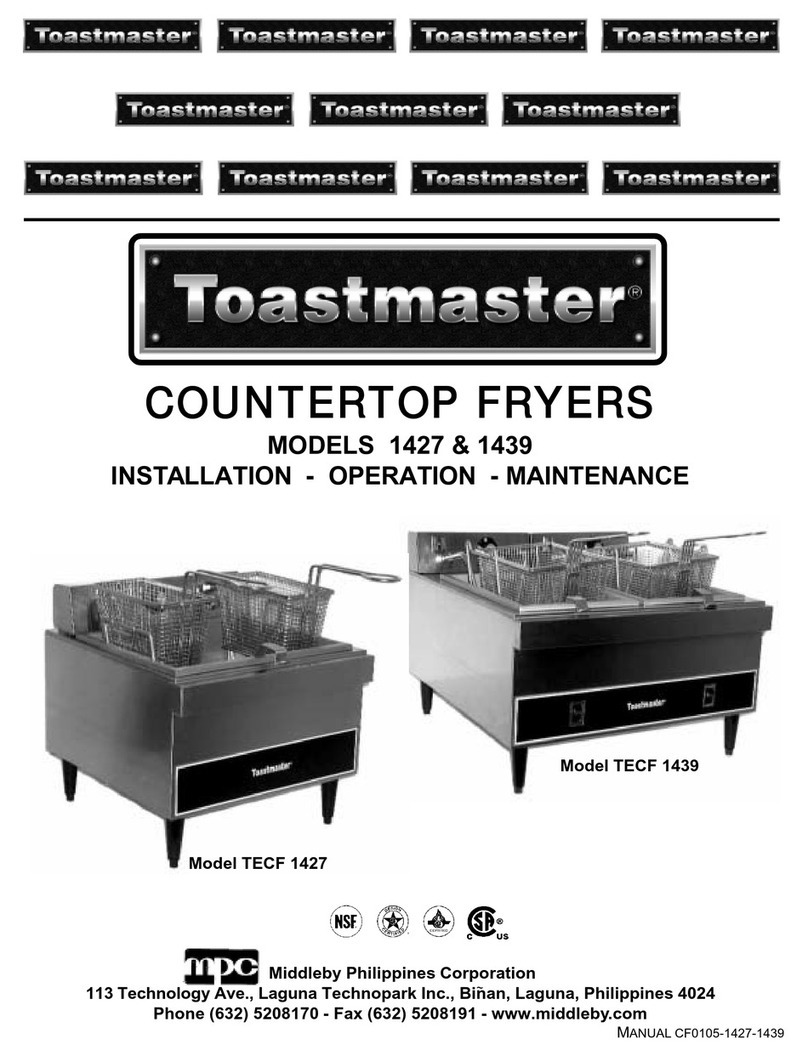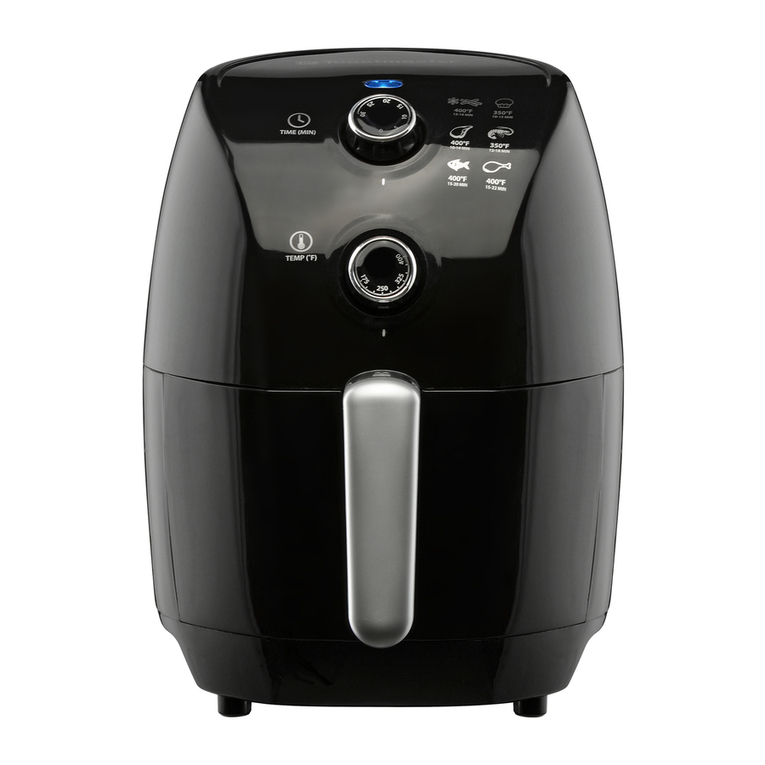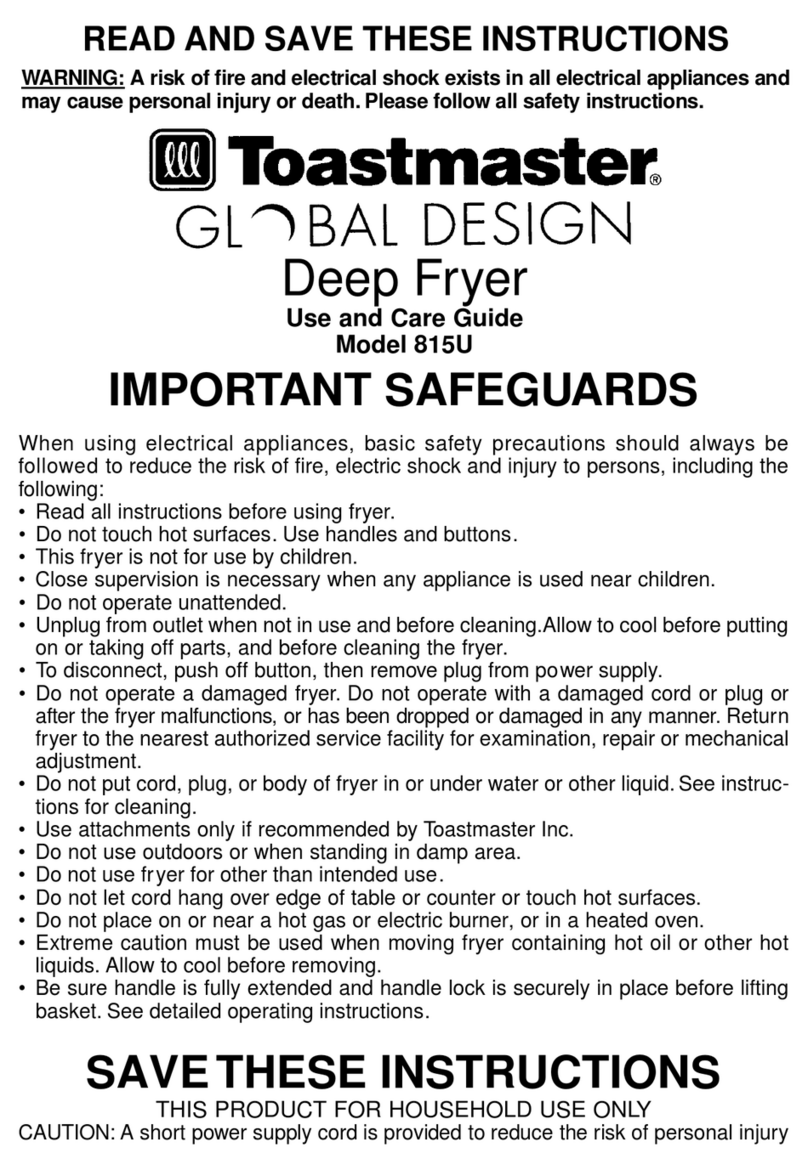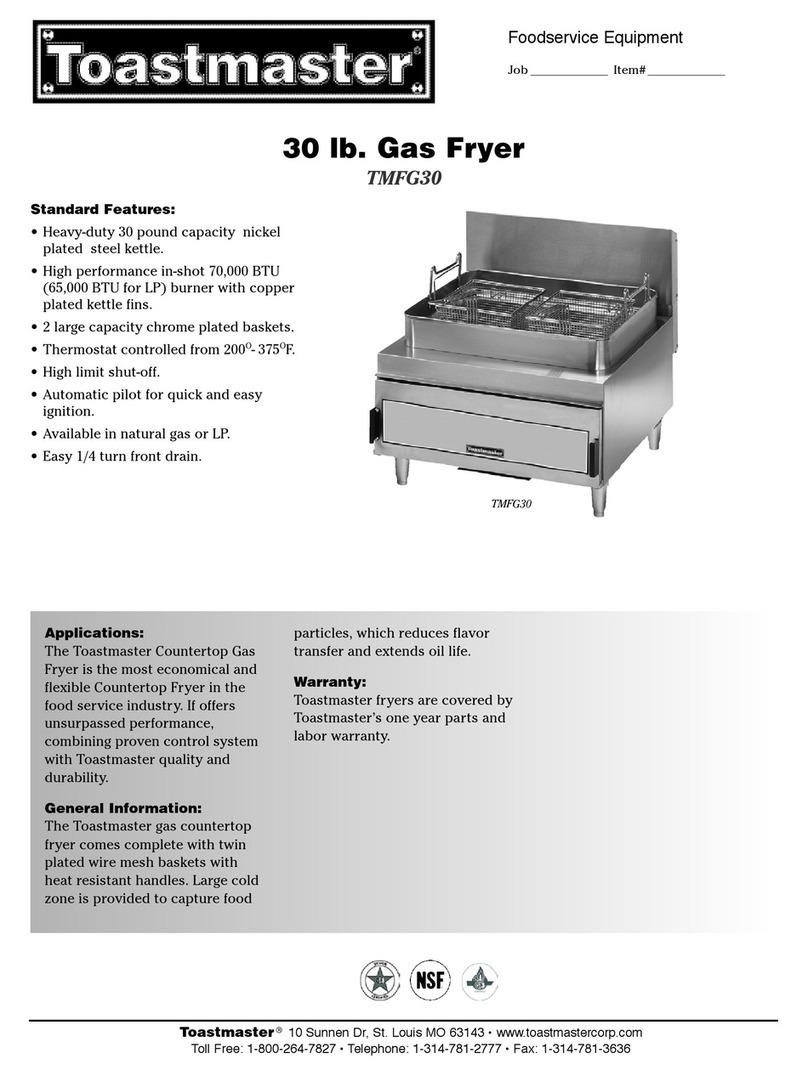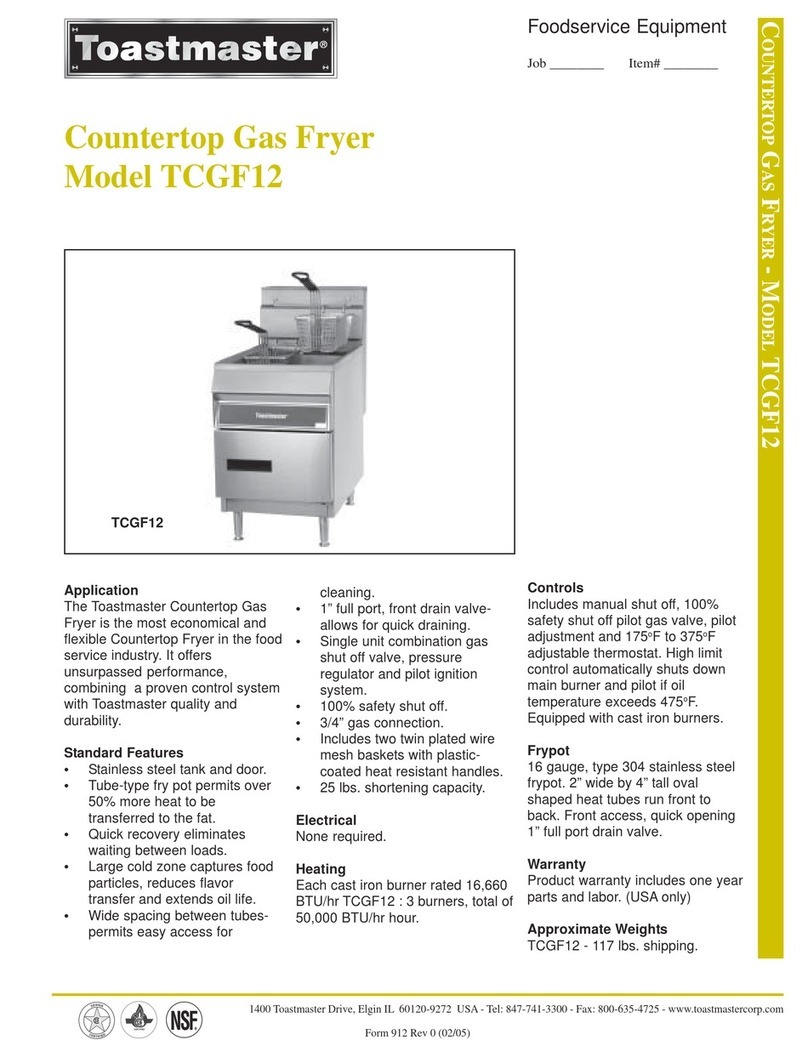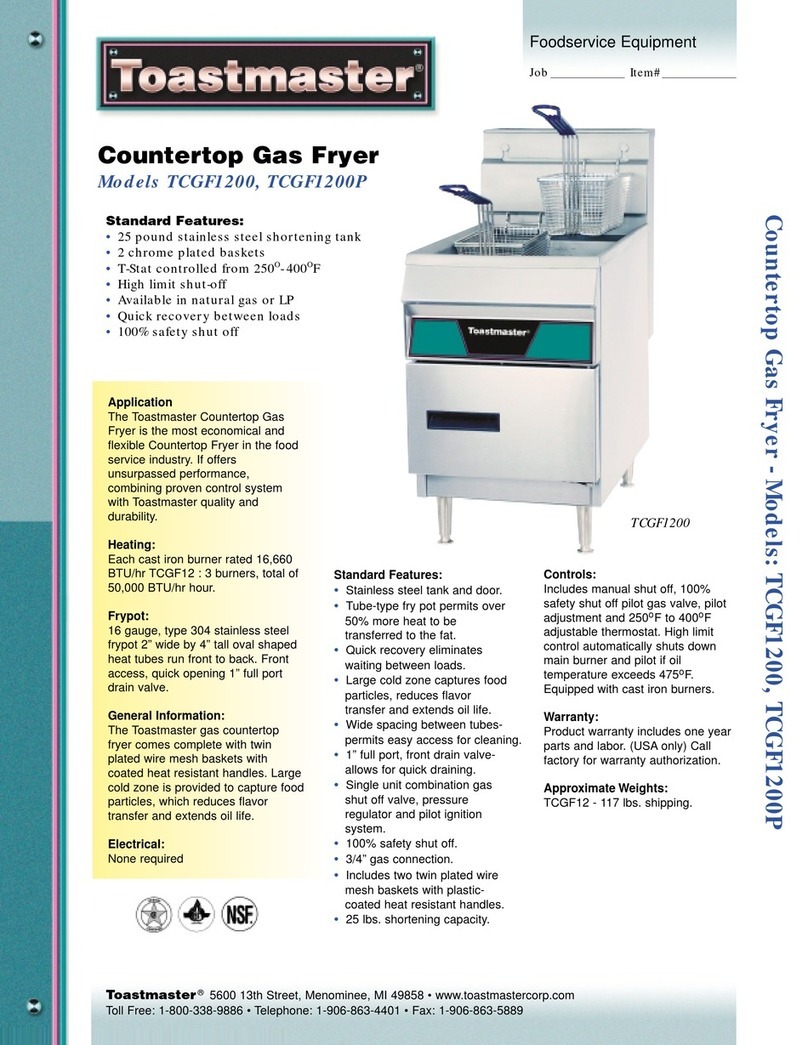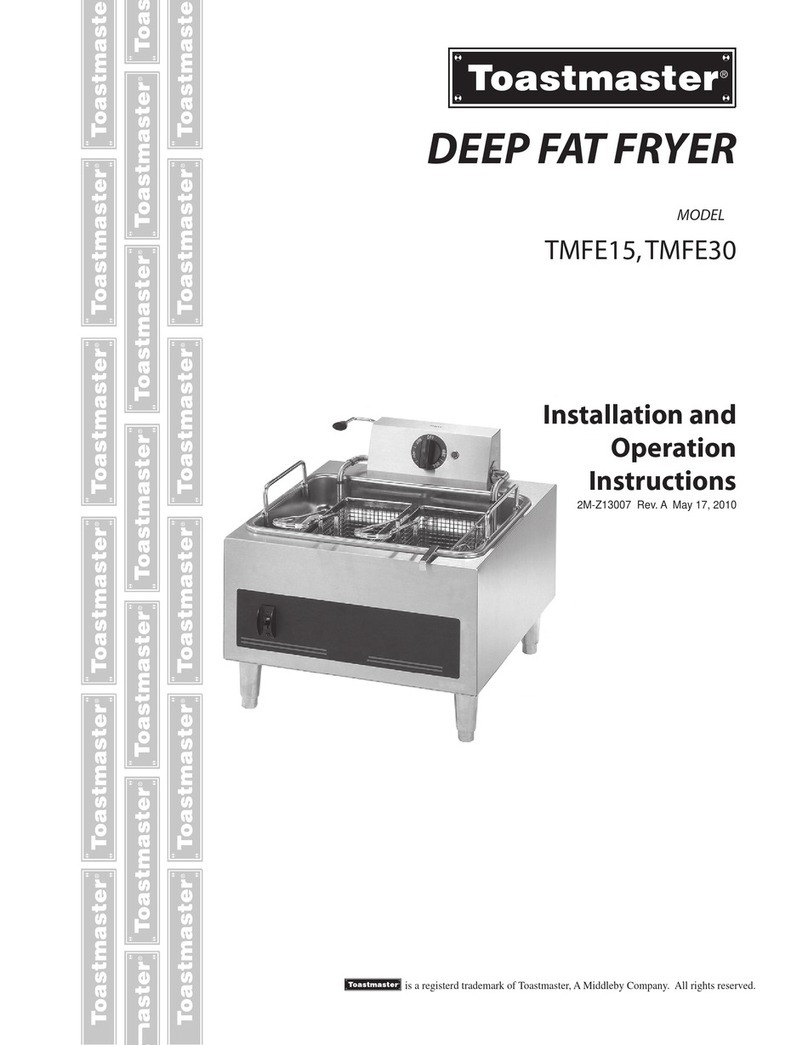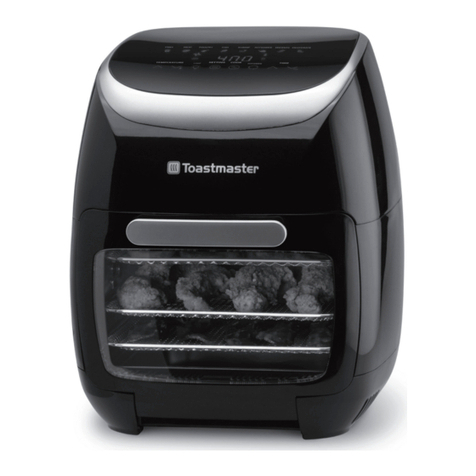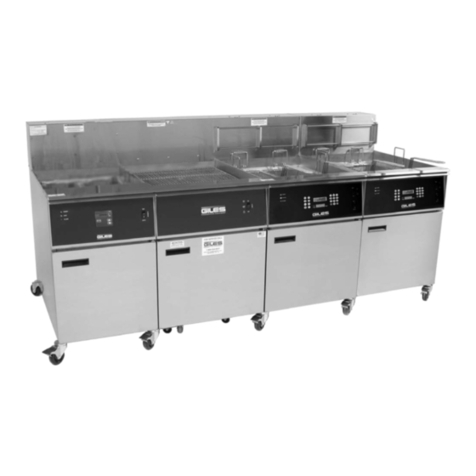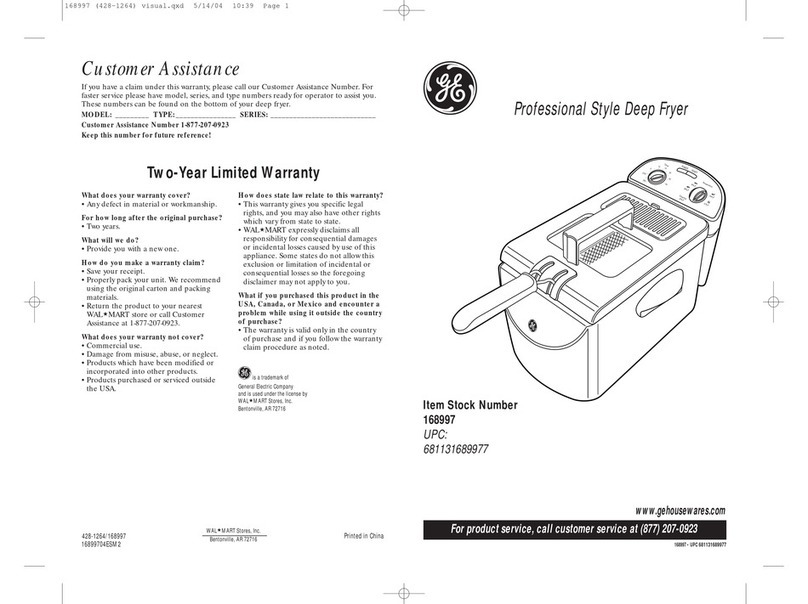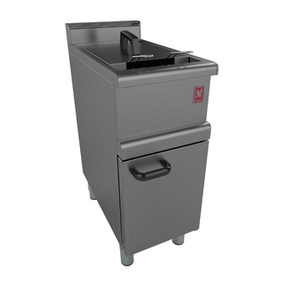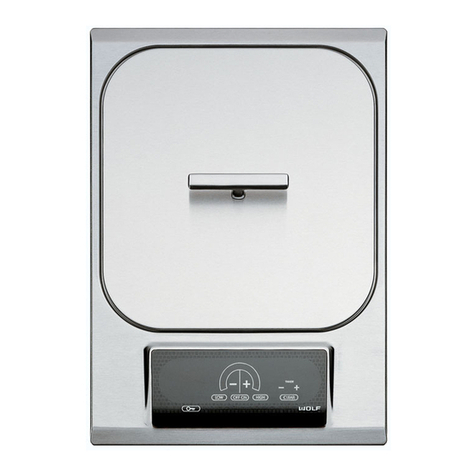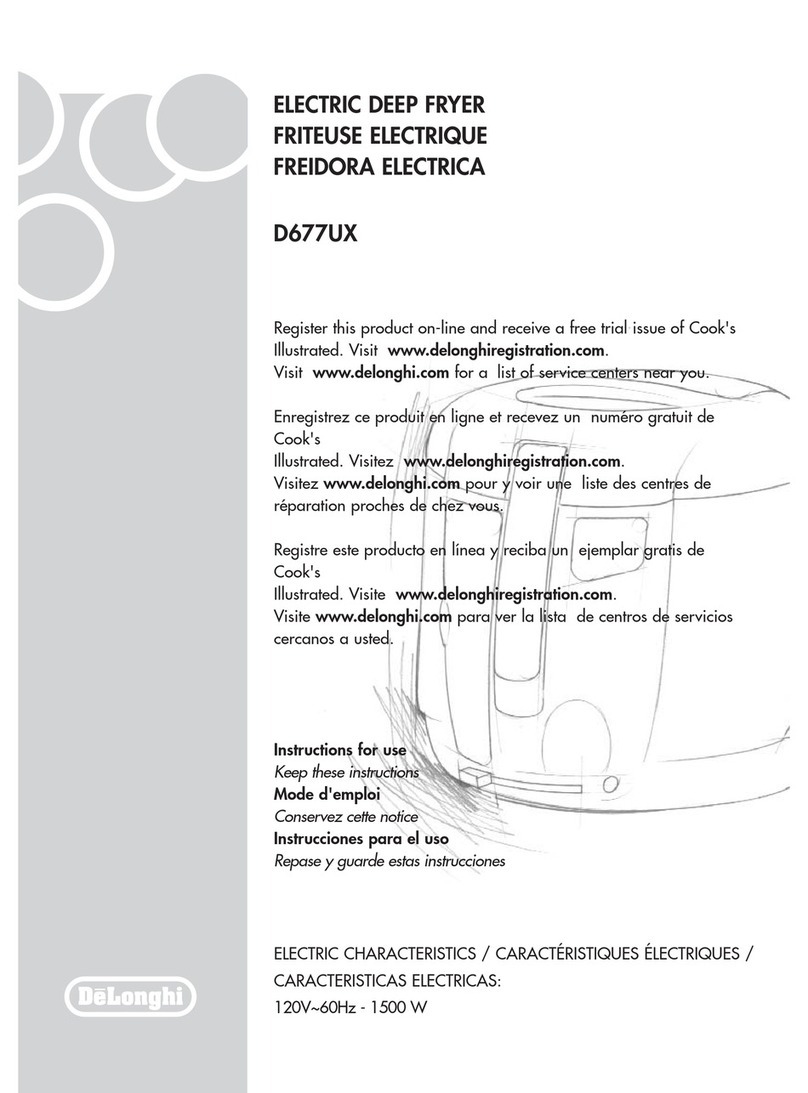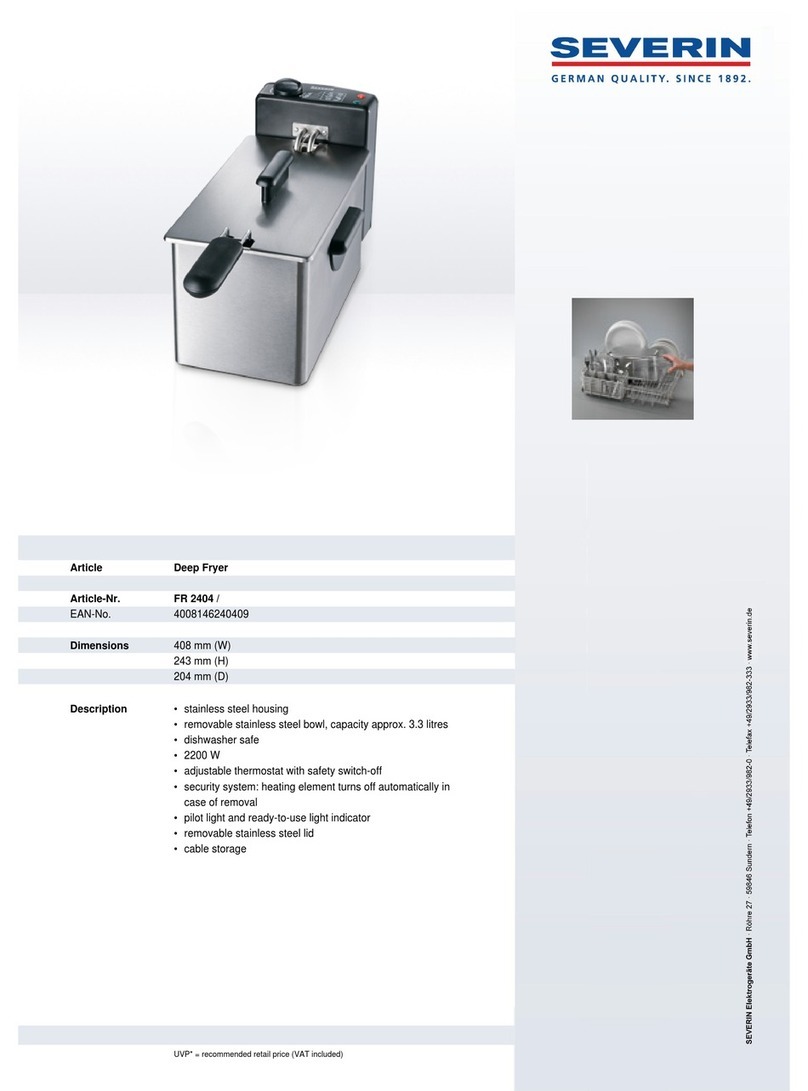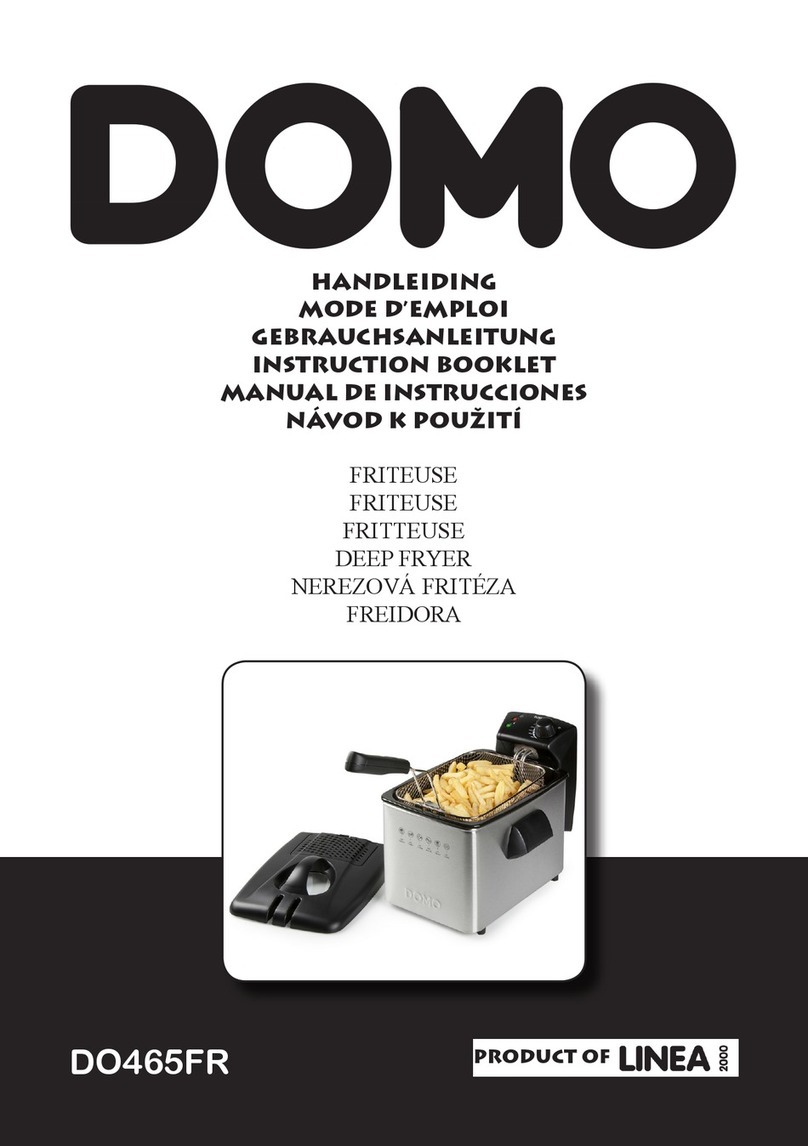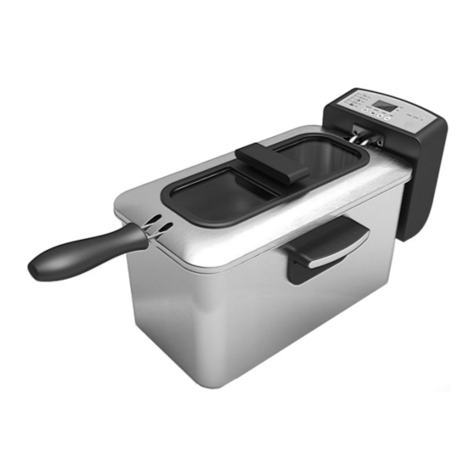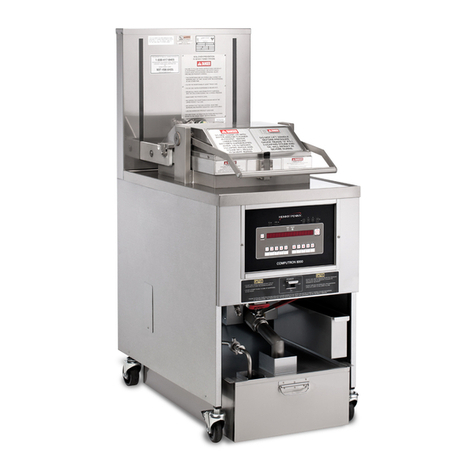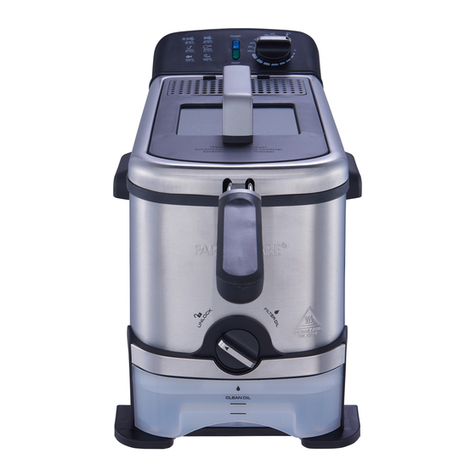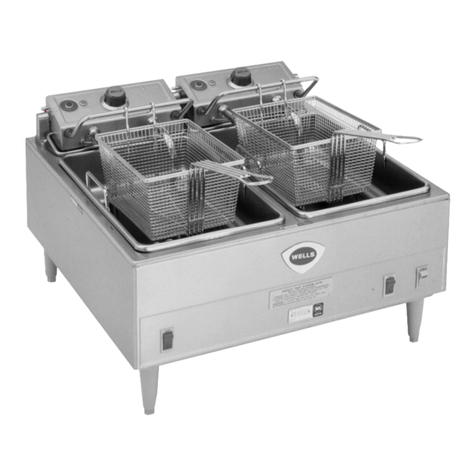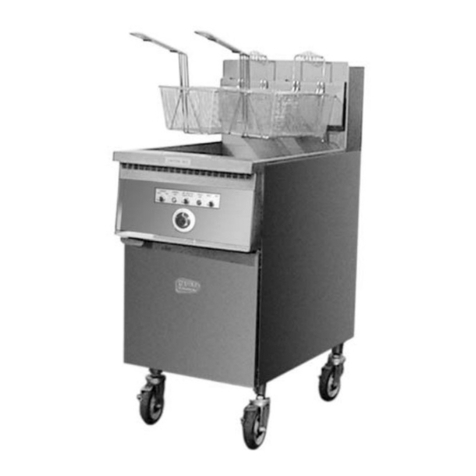
9
A number of commercial devices and materials are
availabletoaidineliminatingfatimpurities.Thereare
several excellent models of pressure lters as well
as strainer-type lters, which, if used regularly, will
prolong life of fat.
However, no purication device will renew broken
down or rancid fat or put new life into it. Once you
haveallowedfattobreakdownitbecomesunsuitable
for frying — in fact browning is impossible.
In addition to ltration, you can prolong the usefulness
offatbysweeteningitwithfreshcompoundeveryday
- replacing about 15% of the bulk you started with. If
you do enough frying so that normal absorption of fat
infoodamountsto15%to20%ofthecapacityofyour
kettleeveryday-thenyoucancallthatyourturn-over
food. It means you can add the recommended 15%
of fresh fat without discarding any of the old.
In three to six months you may spend as much for fat
as you paid for your kettle. So fat is an item you want
to know all about; how to select it; how to manage it.
Themoreproductionyoucan get from each pound of
fat, the more protable your frying operation will be.
To get a high rate of production per pound of fat you
have to avoid two things. One is early breakdown
and spoilage of the compound so that you have to
throw it away before it does enough work to "earn its
keep." The other is excessive sponging up of fat by
the food being fried.
The main cause of fat breakdown is excessive heat.
On the other hand abnormal absorption is caused by
frying too long at too low temperatures. One answer
to both problems is exact control of heat — so that
fat neither smokes up nor soaks up.
Ofcourse,nofat"keeps"forever.Notonlyheat,butair
andmoisture,saltparticlesandcrumbsoffoodworkto
breakitdown.Butyoucanslowupfatdeteriorationby
maintainingpropertemperaturesandbydrainingyour
kettle, ltering or straining the fat once or twice a day
and by keeping the kettle itself absolutely clean.
1. Choose a fat that does not break down quickly.
Hydrogenated shortening, corn, and peanut
oils are less likely to break down under high
temperatures.
2. Do not fry foods at temperatures above those
recommended. The higher the fat temperature,
themorerapidtherateoffatdeterioration.Above
400°F fats quickly deteriorate.
3. During short intervals between frying, turn the
heat down. Do not keep heat on for long
periods between batches.
4. Keep fat clean. Strain or lter daily or at end of
each shift. Add at least 15% fresh fat to your
kettle daily.
5. Atleastonceaday,coolasmallamountoffatand
taste it to see if it has picked up foreign avors.
6. Discardfatthattendstobubbleexcessivelybefore
food is added.
7. Donotoverloadbaskets-piecesshouldnottouch
whenfrying.Shakebasketstopreventfoodfrom
sticking together. Fry similar sizes together.
8. Neversaltfoodsdirectlyoverfat,saltinfatreduces
its life.
9. Raw, wet foods, such as potatoes and oysters,
should be drained or wiped dry before frying to
extend the life of the frying fat. Have foods to be
fried at room temperature.
10. Keep fat temperatures below smoking point to
minimize frying odors.
10 POINT PROGRAM
TO PRESERVE FAT AND PRODUCE THE FINEST FRIED FOODS
CARE OF FAT
